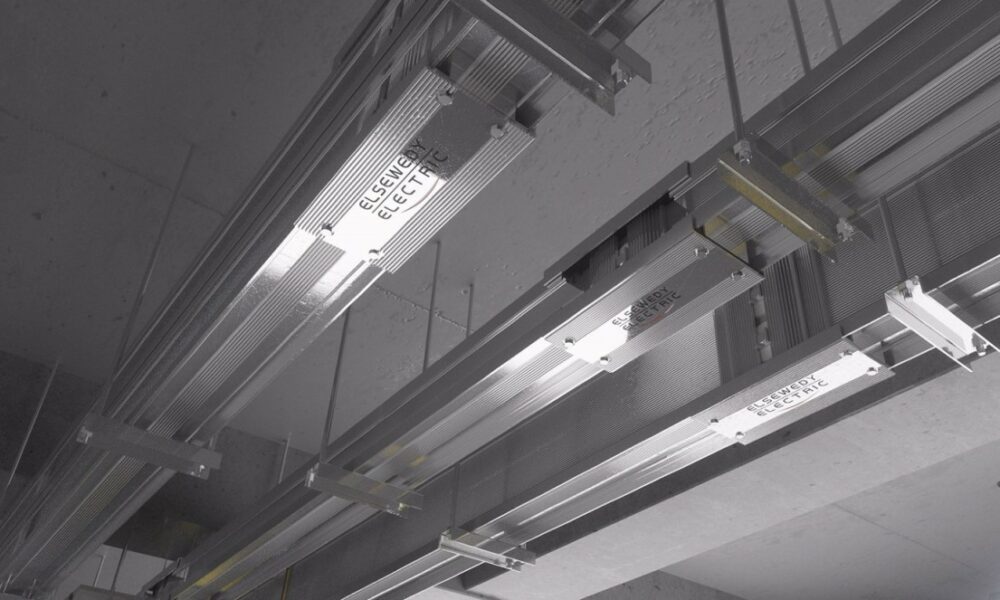An Analysis of the Advantages and Future Direction of Busway Systems

The transformation of electrical distribution systems is a testament to the constant strive for more efficient and adaptable infrastructure within commercial and industrial areas. Busway systems, as a critical example, stand at the forefront of this change. Born out of the need to safely and efficiently manage the distribution of electricity, busway systems have supplanted older, less efficient methods and are now considered a vital component in modern electrical networks. Their role in providing reliable power to a vast array of settings—from data centers to manufacturing plants—highlights the importance of understanding their operation, application, and benefits. As industries continue to change and energy demands skyrocket, the significance of busway systems becomes ever more pronounced, demanding a closer examination of their fundamental principles and advantages. In an area often dominated by conventional wisdom and traditional practices, a thorough grasp of busway systems emerges as a game-changer, offering a unique perspective that challenges the status quo.
The ensuing article takes a comprehensive look at busway systems, discussing not only the basic mechanics of these systems but also outlining their numerous benefits that may not be immediately apparent. Further, it makes a strong case for their adoption, highlighting enhanced flexibility, scalability, and cost-efficiency as core advantages over traditional cabling solutions. By exploring the various busway types and their specific applications, such as ones manufactured by busSTRUT, we aim to provide a fresh viewpoint that empowers industry professionals to make more informed decisions. Through this exploration, we will uncover the transformative potential that busway systems hold for the future of electrical distribution, setting the stage for an engaging conversation on their steadily increasing relevance within the industry.
What is a Busway System?
A busway system, also known as a bus duct, is a modular method of electrical power distribution that comprises prefabricated electrical conductors enclosed within a protective housing. Unlike traditional distribution methods, which rely heavily on cumbersome cable wiring, busway systems provide a more efficient and flexible approach to delivering power in commercial and industrial environments. These systems are composed of sections that can easily be assembled, like building blocks, facilitating both customization and growth. Components typically include straight lengths, fittings, plug-in outlets, and the necessary accessories for installation and connection to loads such as machinery or lighting. Busway systems are designed to be robust, with housing that protects against environmental factors and provides adequate heat dissipation for the conductors inside. This versatility in design and straightforward expansion capacity are significant aspects of busway systems, setting them apart from the more rigid and labor-intensive cable-based alternatives.
Benefits of Busway Systems
Utilizing busway systems offers a range of benefits that surpass traditional wiring methods, especially in terms of flexibility. As buildings expand and businesses change, the ability to quickly modify electrical systems is essential; busway systems excel in this regard because they allow for quick changes without the need for extensive rewiring. They are highly scalable, meaning that increases in electrical demand can be met by simply adding new sections or plug-in units, which is a more streamlined process compared to the laborious task of laying new cable runs. Cost-effectiveness is another prominent advantage – while the initial investment for busway systems might be higher, the decrease in long-term operational costs due to less maintenance requirements and downtime often results in overall financial savings. Additionally, the setup of busway systems is typically quicker and easier, reducing both the labor expense and the duration spent on installation. Furthermore, the improved safety aspect of busway systems, with their enclosed design minimizing the risk of electrical accidents, is an often overlooked but significant benefit over conventional wiring methods.
In the sector of electrical distribution, various busway system types cater to distinct applications and operational requirements. Plug-in busways, for instance, are designed with a focus on flexibility, allowing for the addition or removal of plug-in devices to accommodate changing power distribution needs, making them suitable for environments with shifting layouts, such as offices and retail spaces. Feeder busways, on the other hand, serve as the backbone for high-capacity power distribution and are typically used to transmit electricity from a central point to various substations or heavy-duty equipment within industrial facilities. Lighting busways provide a specialized solution for overhead lighting systems, simplifying the installation and rearrangement of lighting fixtures with their adaptable design. Each of these systems is engineered to support specific scenarios, from daily plugging in and unplugging of devices in commercial setups to the reliable, high-power demands of manufacturing processes.
Installation and Maintenance Considerations
When installing and maintaining busway systems, one must adhere to a stringent set of best practices to ensure operational excellence and safety. It starts with thorough planning to account for load requirements and spatial constraints, followed by careful adherence to manufacturer instructions during the installation process. Safety precautions cannot be overstated; live electrical components present significant hazards, so appropriate personal protective equipment (PPE) and lockout-tagout procedures should be in place before work commences. Load balancing is critical in preventing overloading and ensuring uniform distribution of power, which can prolong the lifespan of the busway and connected equipment. Regular maintenance, including visual inspections for damage or wear and thermal imaging to detect hotspots, is essential for early detection of potential issues. Furthermore, troubleshooting common problems, such as loose connections or damaged insulation, requires a systematic approach to swiftly diagnose and rectify issues, minimizing downtime. Continual education on the latest practices and technological advancements also plays a vital role in streamlining both the installation and maintenance of these complex electrical systems.
Future Trends in Busway Technology
Progress in busway technology is consistently guiding the industry towards more advanced and integrated solutions. One of the upcoming trends is the implementation of monitoring and control systems, embedded directly within the busway infrastructure. These systems are designed to provide real-time data on the health and performance of the electrical distribution network, offering insights into power consumption, load distribution, and potential system inefficiencies. By using such diagnostic capabilities, facility managers can proactively handle maintenance, prevent downtime, and optimize energy usage for cost savings and sustainability goals. In addition, the integration of IoT technology with busway systems is set to significantly improve energy management, with the capability to automate load balancing and provide predictive analytics. These advancements promise not only to make operations more efficient but also to set the stage for smart buildings and industrial automation, where energy efficiency and system reliability are of utmost importance.
Learning about busway systems equips professionals with a solid understanding of their workings, versatility, and the myriad of benefits they bring to electrical distribution networks. From the efficiency and flexibility of installation to the ease of maintenance and the potential for future-scale operations, busways present a compelling alternative to traditional wiring methods. As we examine the challenges of commercial and industrial power requirements, this knowledge serves as a foundation for more informed decision-making. By staying vigilant of emerging trends like integrated monitoring and the burgeoning IoT influences, one can ensure that their facilities remain efficient, safe, and ready for the demands of tomorrow.
Read more from techbullion





